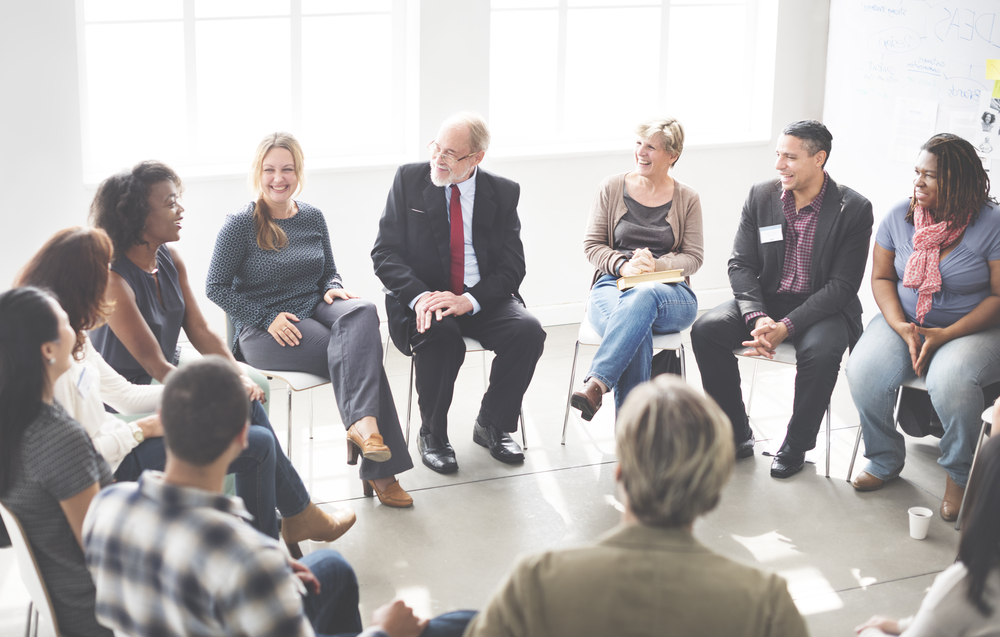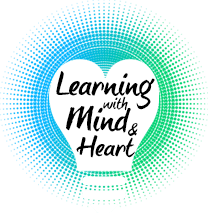Facilitating Group Discussions
EFFECTIVE FACILITATION : RUNNING GROUP CONVERSATIONS
Why running good conversations is so difficult: It’s not about you
When a person is designated as a group leader, the assumption is usually that the leader knows more than anybody else and the leader’s opinion is very important. This attitude makes leaders less likely to listen deeply to the participants’ ideas and more likely to listen with attention to what they should probably say to the group. Effective facilitation requires serious listening, familiarity with the group’s issues and the ability to connect ideas and people so that they can realize what they have in common. Effective facilitation has two important goals: 1) creating an atmosphere of mutual respect, listening and understanding and 2) solving problems or addressing issues of concern to the group.
- Seating matters. The best arrangement is a circle so that all participants can see each other and learn to read body language.
- Size matters. An ideal discussion group is about 8-10 people. The bigger the group the harder it is for the facilitator to keep track of the dynamics. In larger groups, having two facilitators is helpful. They should be seated at opposite sides of the circle.
- Rules of conversation matter. Particularly if a conversation is likely to involve discomfort or conflict, ask the participants to set up some rules for conversation before they start discussing the subject. These rules usually include not interrupting, taking responsibility for opinions rather than blaming other people, taking responsibility for feelings i.e. “I’m getting really angry,” not “You’re a fool for saying or believing that.”
- The facilitator’s role is to focus on process. This means commenting about the “emotional weather report,” i.e. people seem to be uncomfortable/confused/disconnected etc. right now. You can also observe or notice body language, who consistently talks to whom, who hasn’t spoken. Sometimes people talk about each other but don’t directly address each other. The facilitator should direct people to speak to each other and in the present tense. The facilitator should also be able to draw conclusions as they are warranted, using a tentative i.e. subjunctive, mode. After conclusions are presented, the facilitator should ask the group if the sense of the group has been expressed accurately.
- The facilitator should adopt an attitude of curious observation, not involvement. Facilitators should do their best to stay calm and detached. Detached does not mean uncaring. Emotional engagement from facilitators is usually destructive of effective group process.
- The single most important skill of facilitators is called active listening. This skill involves listening carefully, briefly summarizing what you heard, asking if your understanding is accurate and soliciting either points of agreement or disagreement from other members of the group.
- Read, practice, apprentice yourself to a more experienced facilitator. There are hundreds if not thousands of books about group process and dialogic conversations. Of Education, Fishbowls and Rabbit Holes (Fried, 2016, www.amazon.com) has a brief appendix about facilitation. Mypersonal favorite is Joining Together (D. Johnson and F. Johnson, 2009, 10th ed) . This book has a thorough discussion of many of the elements of group dynamics and facilitation. The Magic of Dialogue (D. Yankelovitch, 1999) is an excellent guide to creating conversations that encourage deep listening. Intergroup Dialogue (D. Schoem and S. Hurtado [eds] 2001) is an excellent resource for conducting conversations about inter-group differences.
It takes years to become an effective and skilled group facilitator. You can’t learn how to do this by reading about it. You have to begin observing groups and running groups and asking people to watch you do it. Group conversations are one of the most effective pedagogies we have for helping people learn both content and emotional self management at the same time. I am happy to respond to any questions about this subject at lrngmindheart@gmail.com.

Discussing Race and Other Conflict-Filled Issues
Conflict and unwillingness to listen to different perspectives has exploded in the United States in the last decade. Race, religion, sexual orientation, age, place of residence (Urban/rural, north/ south, coastal/ mid-continent) gender, ability status, immigration status and ethnicity are all matters that can create conflict in conversation. The dogmatism that has typically been reserved for religious beliefs seems to have bled into any other topic where people might strongly disagree with each other. Dialogue around conflict has been replaced with epithet hurling and name calling. Many of us have lost the ability to listen with open minds and adopt an attitude of curiosity toward people who hold different perspectives. Conversations have become arguments and winning, not understanding, seems to be the point. This highly emotional atmosphere of rigid self-expression presents significant challenges to anyone who tries to facilitate a conversation about any of these topics.
Some courageous facilitators are holding group discussions designed to help people relearn the habits of effective, compassionate listening. These discussions are typically called “Critical Conversations,” “Dangerous Dialogues,” or “Living Room Conversations (Livingroomconversations.org).” Their purpose is to teach listening skills, mindfulness and emotional self-management to people who realize that trying to win arguments in this arena is not an effective approach to mutual understanding or problem solving. In order to address the crises we are experiencing around race, many communities and religious groups are organizing discussions, setting up book groups, conducting Zoom meetings to watch films or TED talks and conducting discussions afterwards. IF YOU ARE INVOLVED IN SETTING UP THESE TYPES OF DISCUSSIONS, YOU NEED ADDITIONAL TRAINING. The conversations are often explosive and can do more harm than good if not properly managed. Living Room Conversations provides this kind of training and there are numerous other organizations doing this work as well.
I have inserted a link below that demonstrates an approach to helping people talk to family members about race. This was created for a Jewish Temple and contains references to the Jewish imperatives about “welcoming the stranger,” and being compassionate in understanding the pain of those who are suffering. All monotheistic faith traditions contain similar ideas in their sacred texts, and I have found that basing the conversation around deep beliefs gives people courage to continue their efforts. Karen Armstrong’s book, Twelve Steps to a Compassionate Life, (Anchor Books, 2011) provides a deep understanding of the power of compassion in all of the major faith traditions and can support any facilitator who is trying to convey this message.
I am also available to train people who want to facilitate, plan or reflect on groups they have conducted. This is powerful and important work. Anybody who tries to do it needs excellent preparation, mindfulness and clarity of purpose.
Click HERE to download the powerpoint.
